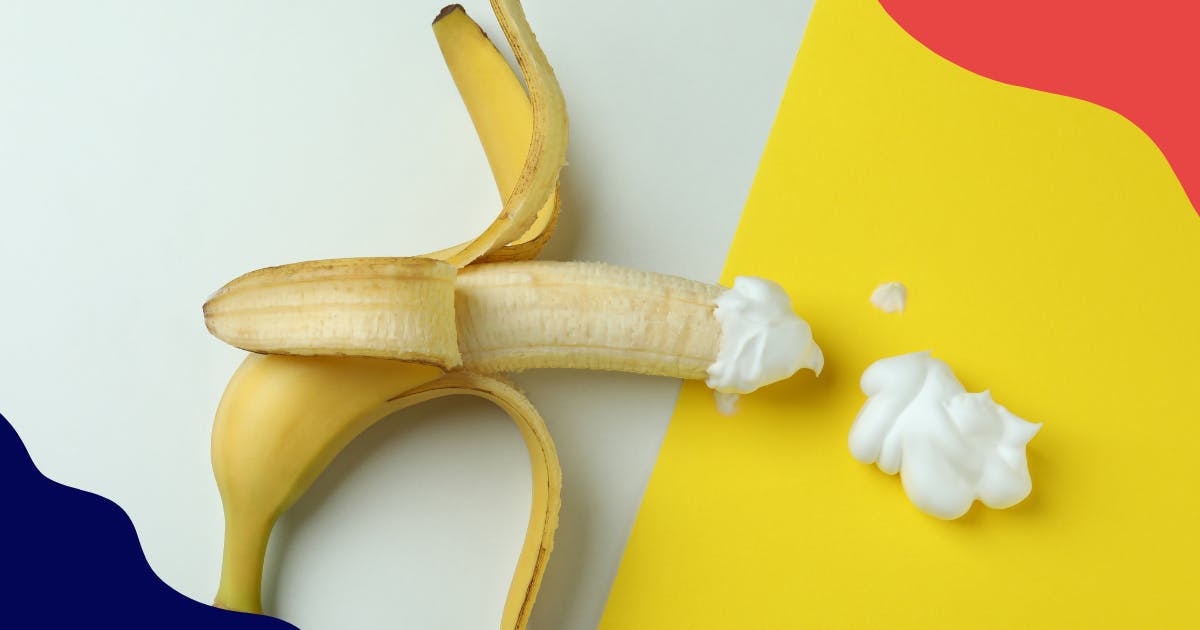There are clinical treatments for premature ejaculation. But did you know there are also many drug-free exercises for PE?
You’ve been spending a lot of time at the gym exercising.
Your body is beginning to look great. Women are going to notice you this summer.
Happy days.
But your confidence gets crushed as soon as you remember there is one body part that’s letting you down.
Unfortunately, in your opinion its the most important body part to a single man.
Do you ever wish you could control your erection for just a few minutes longer?
Imagine the possibilities.
Imagine her reaction.
Home remedies for premature ejaculation have been tried and tested for decades. Read on to find out some must-do exercises that are good for your premature ejaculation as well as your body.
Which are the best premature ejaculation exercises?
The inability to maintain an erection until orgasm is achieved is a common problem affecting men. This condition is called
and indicates the presence of an underlying disorder.
There are several causes that can lead to premature ejaculation. However, irrespective of the specific cause, it has been found that taking steps to strengthen the pelvic floor muscles via exercise can help men improve their ejaculatory health.
Exercise is important for men to hold an erection for longer in order to prevent premature ejaculation. Premature ejaculation exercises are definitely worth the time.
What happens with PE and how exercises for premature ejaculation can help?
Ejaculation refers to the process of release of semen from the penis. Premature ejaculation or PE occurs when the ejaculation happens earlier than the man or his partner would like during the intercourse. It is also called rapid ejaculation, quick ejaculation, early ejaculation, or premature climax.
Though this process is primarily controlled by the central nervous system, other tissues and organs such as muscles, nerves, and blood vessels in the pelvic region also play a key role in holding the erection and delaying ejaculation.
Ejaculation involves 2 steps: emission and expulsion.
- Emission refers to the step when the sperms move from the testicles toward the prostate and mix with the seminal fluid to form semen. The tube-like structure in the penis called the vasa deferentia helps the sperms move from the testicles through the prostate toward the base.
- The second step of expulsion occurs due to the contractions of the muscles located at the base of the penis. It helps to force the semen out of the penis resulting in ejaculation.
Usually, ejaculation should occur at the time the man achieves orgasm or climax. However, when the expulsion of semen occurs before climax, it results in premature ejaculation that can prevent a man from attaining orgasm.
Premature ejaculation can be prevented using some home-remedies for premature ejaculation. By strengthening the muscles located at the base of the penis, otherwise known as the pelvic floor muscles, a man can gradually increase his performance in the bedroom.
How?
The strengthening of these muscles through regular exercises can help men control and regulate their contractions such that the expulsion of semen can be delayed until orgasm is achieved.
Here are the best exercises for premature ejaculation that you can try at home.
Most effective home remedies for premature ejaculation
Squeeze method
The squeeze method is an easy exercise that needs to be performed by both partners during intercourse. This exercise can help to prolong the time for which the man can hold the erection, and also help build his natural stamina. 1
To practice this exercise, the man needs to stop when the urge for orgasm is felt. Then, the partner should wrap her hand around the base of the penis and squeeze firmly. This will slow the flow of blood to or from the organ. The grip on the erection should be maintained firmly until the man’s urge for orgasm is gone. Then, the couple can continue the intercourse as normal.
Men should practice this method as many times as they like. Regular practising of squeeze method can improve their control over erections and allow them to delay ejaculation. This can also help bridge the gaps of communication between the man and his partner thus improving personal relations and confidence in each other.
Couples can also try to make this method work more effectively by considering the step of squeezing the penis as an act of foreplay. This will make the exercise more appealing and enhance the results achieved.
Kegel exercises
Kegel exercises can help men gain better control over the pelvic floor muscles and strengthen their ability to delay ejaculation. These exercises are particularly beneficial for working out the pubococcygeus muscle that plays a role in the process of expulsion of semen during intercourse. Pubococcygeus muscles are the hammock shaped muscles stretching from the pubic bone to the tailbone.
To practice Kegel exercises, men need to learn to stop the flow of urine during urination. The muscles that have to be held or contracted to prevent the escape of urine are the pelvic floor muscles. It is advisable to try locating these muscles initially during the act of urination itself. This will help men know the exact muscles that need to be contracted to perform Kegel exercises.
Once men have identified the pelvic floor muscles, they can practice Kegel exercises at any time. They need to contract these muscles as if to prevent the flow of urine and hold the contraction for a few seconds. Then, the contraction can be released. The same must be repeated at least 10 to 15 times during each session. Men can practice 3 to 4 sessions of Kegel exercises every day to achieve faster and better results to prevent premature ejaculation.
Kundalini yoga
Kundalini yoga is a lesser-known yet highly effective exercise to restore sexual health in men. It is a form of yoga asana that can improve the men’s control over erections and ejaculation.
Kundalini yoga can help to prevent premature ejaculation by relieving mental stress and relaxing the mind and body.
Additionally, it also helps to improve the man’s self-awareness thus improving his ability to understand his partner’s sexual needs. Kundalini yoga also works by strengthening the pelvic floor muscles thus supporting men when they are attempting to delay the orgasm.
To practice Kundalini yoga, sit across your partner and gaze into each other’s eyes while trying to match each other’s breathing pattern. Do this for about 5 or 10 minutes. Then, transition into foreplay by experimenting with touch while continuing to harmonize your breathing.
Move into a slow and sensual act of intercourse using mindfulness while relaxing and tightening the pelvic floor muscles alternatively. This technique can help men focus on the pleasure or positive aspects without feeling anxious or apprehensive about getting an ejaculation before the climax.
With the regular practice of Kundalini yoga, men are able to delay their ejaculation more efficiently.
Applying strategic pressure
It is a technique that can make it easy for men to delay ejaculation. The first step to practice this technique is putting pressure over the perineum. The perineum is the spot lying midway between the anus and the scrotum. It extends to the prostate gland. Applying pressure on this spot just when an early ejaculation is about to occur can help to delay the process.
This technique works by blocking the path to the prostate gland due to the pressure applied. Generally, this gland contracts and relaxes at the time of orgasm until ejaculation occurs. Pressing the perineum breaks this rhythm thus delaying ejaculation.
The pressure can be applied directly on the perineum by using fingers. Alternatively, men can also apply pressure on this spot by tugging the testes. They can also ask the partner to gently pull the testes down and away from the body during intercourse for delaying ejaculation.
Stress-relieving exercises
Stress and anxiety are common causes of premature ejaculation. Research studies have shown that mental stress and the fear of repeated failure can also worsen the existing premature ejaculation. 2
Men can practice stress-busting exercises such as meditation to relieve anxiety. Aerobic exercises such as walking, jogging, and swimming can also help reduce anxiety. These home remedies for premature ejaculation work by reducing the production of stress hormones called cortisol while increasing the production of feel-good hormones such as dopamine.
Aerobic exercises, weights training, and high-intensity interval training such as push-ups can also help to reduce weight by burning more calories efficiently. This can help improve men’s sexual health by preventing obesity, diabetes, hypertension, and high cholesterol, which are the most common causes of premature ejaculation. 3
Benefits of exercises in the management of premature ejaculation
Exercises can help men avoid premature ejaculation by acting as a standalone treatment when the condition is mild without any serious underlying disorders. These home remedies for premature ejaculation work in a variety of ways to improve the sexual health of men as given below:
- Strengthen pelvic floor muscles
- Reduce anxiety and apprehension
- Relax mind and body by reducing cortisol production
- Reduce obesity, cholesterol, and triglycerides
- Regulate blood pressure and other vital parameters through rhythmic breathing
- Lower blood sugar levels thus controlling diabetes
Men can perform these exercises on a regular basis to restore their ejaculatory health. These exercises can be performed even in combination with the medical treatment they are undergoing for the management of the underlying cause such as depression, hypertension, or diabetes. The exercises can speed up the recovery of men thereby allowing them to delay ejaculation more efficiently.
Other treatments to avoid premature ejaculation
When exercises alone do not help to prevent premature ejaculation, men may need to seek the advice of a healthcare expert. The treatment recommended for the management of premature ejaculation may include one or a combination of therapies mentioned beneath:
Psychological Therapy:
This therapy addresses the negative emotions that lead to sexual difficulties. Psychological therapy is often used in combination with exercises, medications, and behavioral therapy for better results.
The goal of this therapy is to identify the source of the problem and find solutions while allowing the men to become less anxious about their sexual performance.
- Behavioural Therapy: exercises such as the squeeze method and the stop-start method form a part of the behavioural therapy. It can help build tolerance for delaying ejaculation by training the body to control the emission of semen.
- Medical Therapy: depending on the underlying disorder responsible for triggering premature ejaculation.
Conclusion
The muscles in the pelvic floor are actively involved in sexual intercourse. Strengthening these muscles can improve men’s sexual performance by making the erections stronger, harder, and longer-lasting.
The pelvic floor exercises discussed above can help men avoid premature ejaculation and make sex life more satisfying for couples. These exercises can improve the ability of men to have better control over their erections and ejaculation. These exercises are easy to perform and offer lasting results while enhancing their sexual pleasure.
Depending on the underlying cause such as hypertension or diabetic neuropathy, men also need to seek appropriate treatment so that they can enjoy a healthy sex life.
If you would like to find out more about your bedroom health contact the Men’s Health Clinic today.
References:
- Sukumar Reddy Gajjala & Azheel Khalidi. (2014, December). Premature ejaculation: A review. Indian Journal of Sexually Transmitted Diseases and AIDS. https://www.ncbi.nlm.nih.gov/pmc/articles/PMC4553859/.
- Yue Xia, Juanjuan Li, & Guang Shan. (2016, August). Relationship between premature ejaculation and depression. Medicine (Baltimore). https://www.ncbi.nlm.nih.gov/pmc/articles/PMC5008563/.
- Yildiz, Y., Kilinc, M.F., & Doluoglu, O.G. (2018, September). Is There Any Association Between Regular Physical Activity and Ejaculation Time?. Urology Journal. https://www.ncbi.nlm.nih.gov/pubmed/29681052.




